This is a guest blog written by our Monitoring Technician, Emma.
Each spring, Estuary Program staff and volunteers head out into the watershed to conduct bioassessment monitoring. The measurements we collect contribute to a long-term dataset on stream health and habitat quality. This spring is my first season on the project.
A Closer Look at our Creeks
Bioassessments are not a typical field day at the Estuary Program. Each one takes about six hours, during which we collect over 1,500 points of data on the physical and biological conditions of a 150-meter stretch of creek—things like rock size, canopy density, stream slope, and channel shape. We also collect aquatic insects that can tell us a lot about water quality. As I started working on these assessments, I found myself becoming much more thoroughly acquainted with the creeks which I usually visit to collect a quick water sample or measure flow. I’ve felt so grateful for the chance to get to know these places more intimately—to slow down, notice tiny details, and consider how each element of the stream ecosystem is connected.
Getting to know the creeks in this way has reminded me how science is so much more than just collecting and analyzing data—it can be a way of deeply connecting and forming a relationship with our ecosystems. Robin Wall Kimmerer, who is a botanist, author, professor, and member of the Citizen Potawatomi Nation, writes, “Paying attention is a form of reciprocity with the living world, receiving the gifts with open eyes and open heart.”
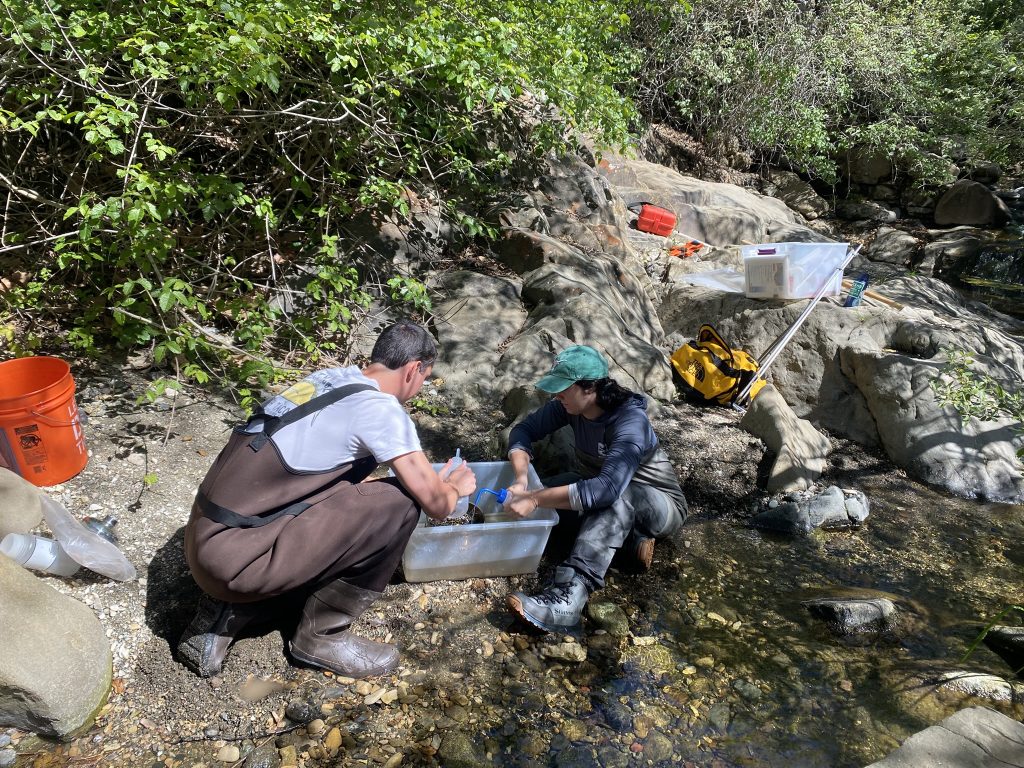
Searching for Treasure
A key part of bioassessment is collecting benthic macroinvertebrates. These small aquatic insects live on the bottom of creeks and serve as biological indicators of water quality. Some species are highly sensitive to pollution, while others can survive in degraded conditions. By analyzing the types of bugs we find, we can learn a lot about the health of the stream.
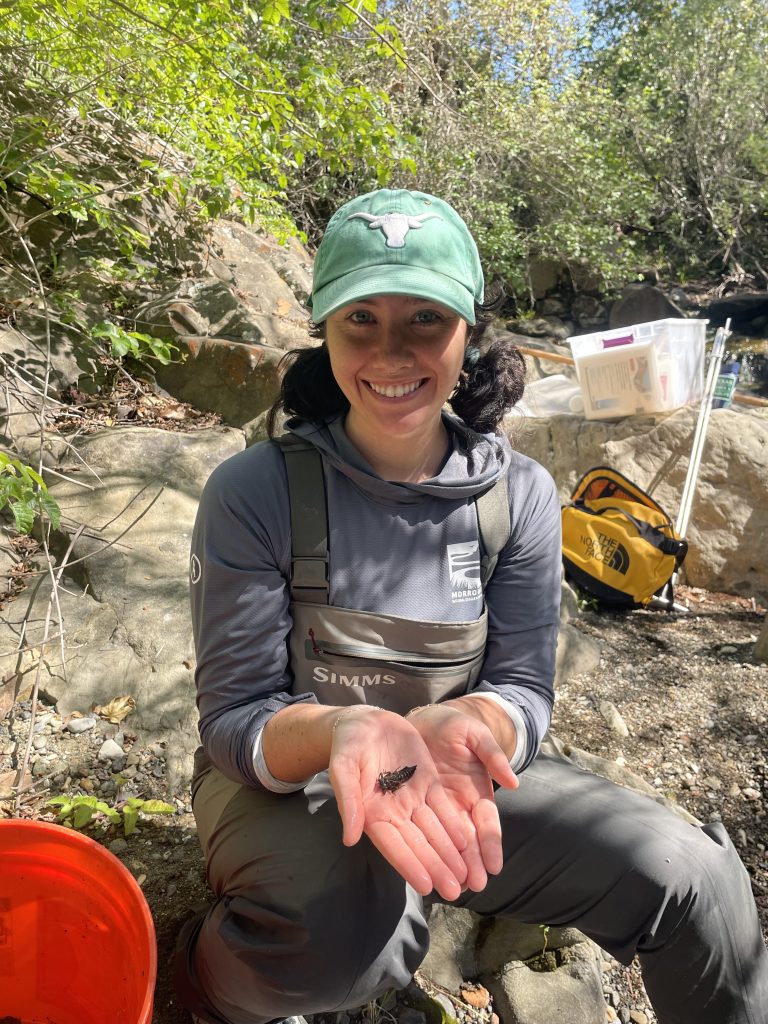
I’ve spent a lot of time working on this portion of the survey—often crouched in a cold streambed, hands red from the chill, scrubbing rocks and gravel to free the insects clinging to them. As we rinse sediment through a sieve and watch tiny creatures emerge, it can feel a bit like panning for gold. And for the work we’re doing, they are a kind of treasure. Each bug we find gives us more valuable information we can use to keep protecting these creeks.
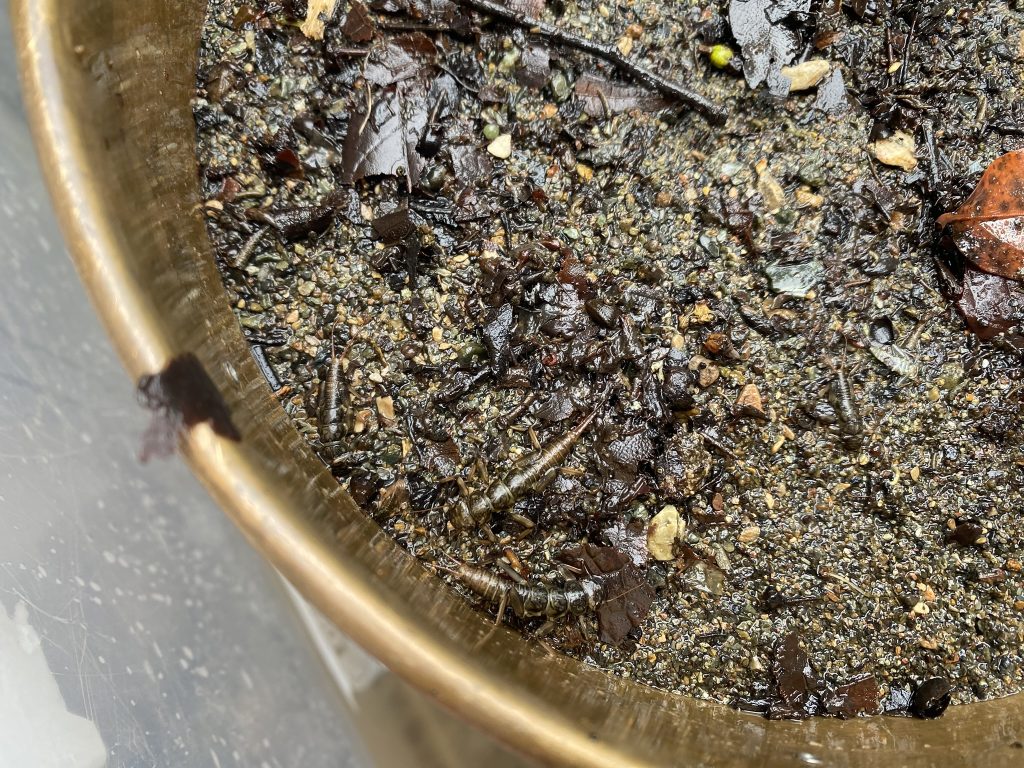
The Gift of Slowing Down
There’s a rhythm to bioassessment fieldwork that encourages you to slow down and look closer. We wade through shaded stretches of stream, ducking and weaving to avoid poison oak. We plunge our fingers into the cold water to measure rock size or collect a sample, and we feel the slippery algae against our skin. All the while, the soft, steady sound of the water flowing beside us is a soundtrack to the work.
Unexpected surprises also weave their way into that rhythm—interesting plants, tracks in the mud, or a glimpse of frog eggs, a scrub jay, or a western fence lizard among the rocks. Every site feels a little different, and every day in the field brings something new to discover.
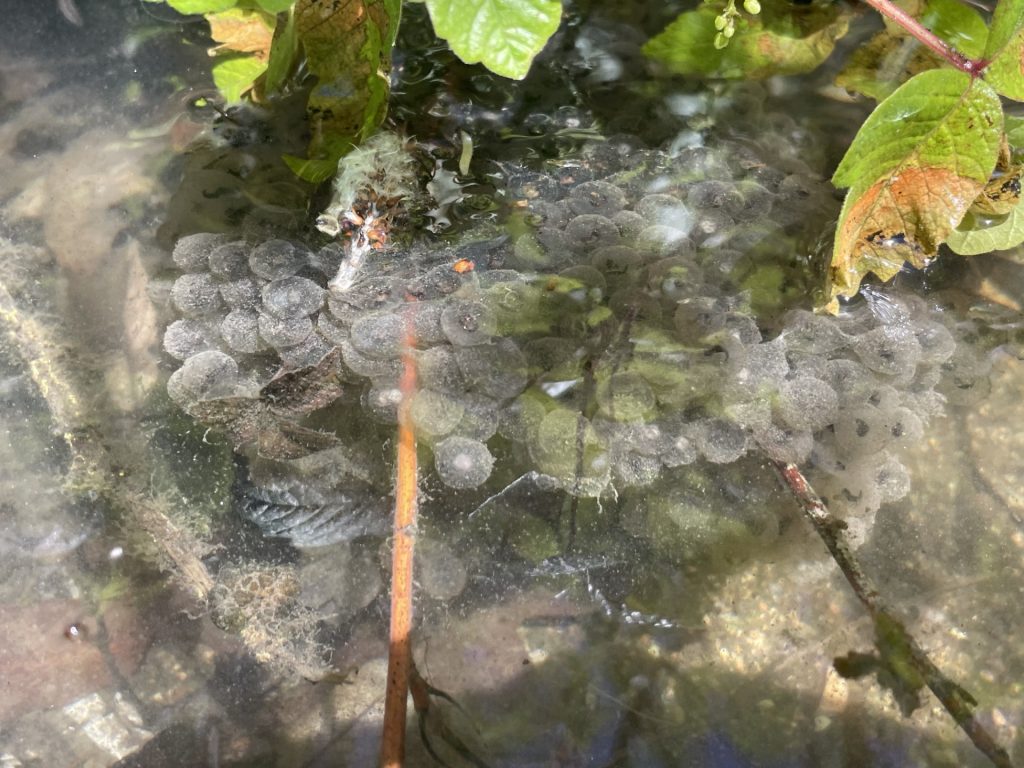
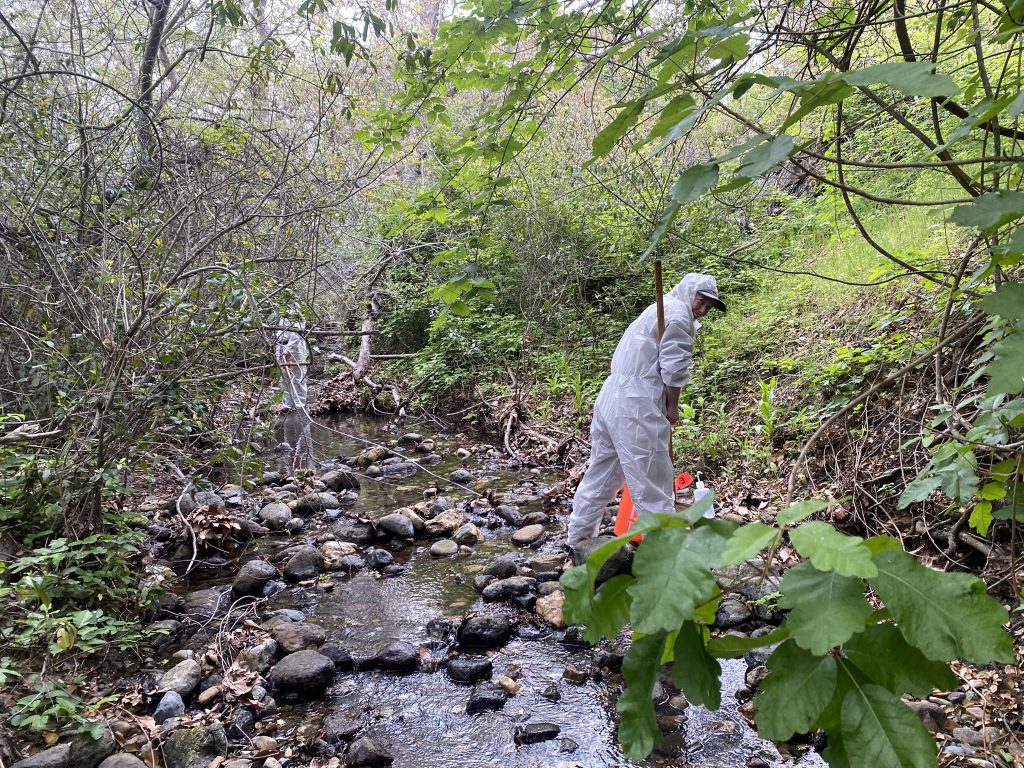
One of my favorite things to notice is the way sunlight reflects and refracts off the water, creating those shifting, glimmering networks of lines on the stream bed or on an overhanging rock. Every part of the stream – living and nonliving – has something interesting to offer. Every part warrants a second look.
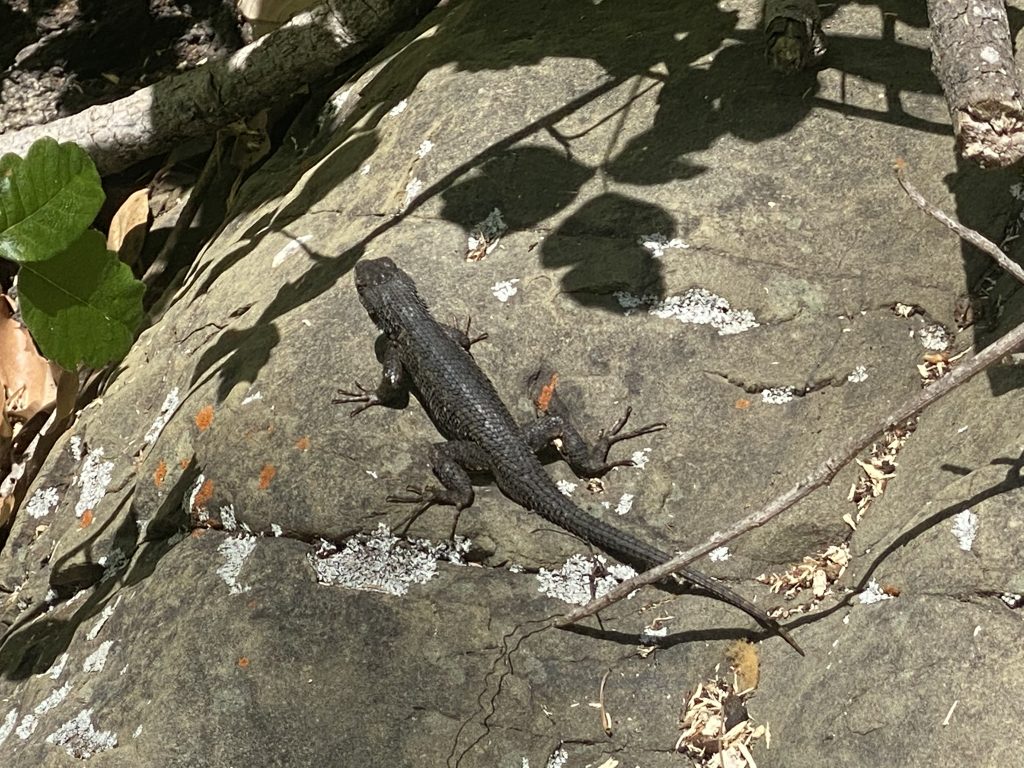
Looking Ahead
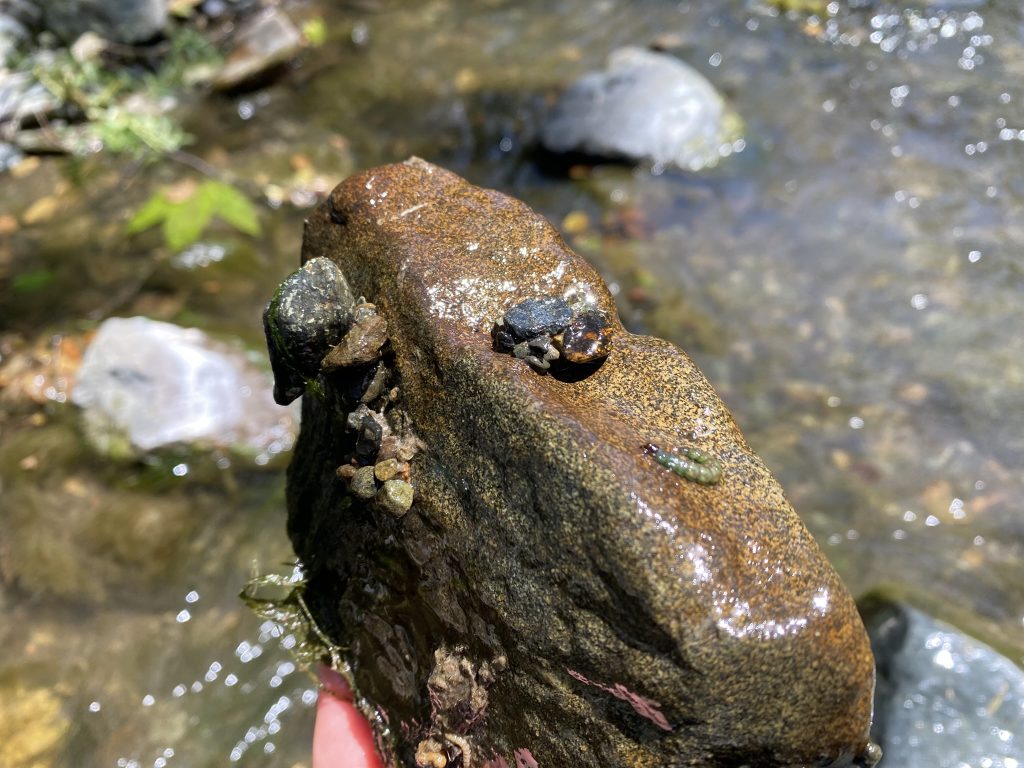
As our 2025 survey season continues for the next few weeks, I’m looking forward to all we have yet to discover. Bioassessment monitoring is hard work, but it’s also deeply rewarding. There’s something special about knowing that the same process that gives us quiet moments of awe also gives us the data we need to understand and protect these ecosystems. Helping care for the creeks while being changed by them in return is a kind of reciprocity I am grateful to be a part of.
Help us protect and restore the Morro Bay estuary!
- Donate to the Estuary Program today and support our work in the field, the lab, and beyond.
The Estuary Program is a 501(c)3 nonprofit. As a result, we depend on funding from grants and generous donors to continue our work. - Support us by purchasing estuary-themed gear from ESTERO. This locally owned and operated company donates 20% of proceeds from its Estuary clothing line and 100% of Estuary decal proceeds to the Estuary Program. Thank you, ESTERO!
- Purchase items from the Estuary Program’s store on Zazzle. Zazzle prints and ships your items, and the Estuary Program receives 10% of the proceeds.
- Subscribe to our seasonal newsletter: Between the Tides!
- We want to hear from you! Please take a few minutes to fill out this short survey about what type of events you’d like to see from the Estuary Program. We appreciate your input!